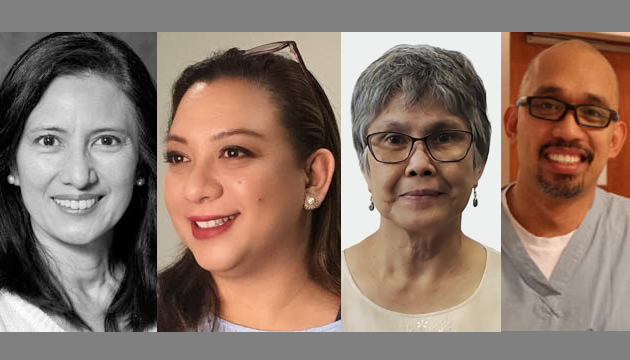Editor’s Note:This is Part 46 of Dr. Pagtakhan’s series on COVID-19 from his Pilipino Expresscolumn, Medisina at Politika.
December 16, 2022: A little overa month ago on November 10, memories of my medical practice raced back to mind with speed upon reading the Winnipeg Free Press top news by Chris Kitching: “Children’s Hospital ER inundated.” It was at the Children’s that for many years I attended to neonates, infants, and children with respiratory diseases and held bedside teaching rounds with young doctors in training. I cannot recall a night or day in that time similar to the ER (emergency room) and the ICU (intensive care unit) situations as described below in that headline:
“overflowing waiting room;children coughing everywhere;sick kids lethargic, gasping for air; respiratory therapists stretched thin; staff asked to work extra shifts or overtime; employees from other areasreassigned to the ICU;wait time as long as six hours even for an immune-deficient child; there wasn’t physical space to put people anymore.”
The news was so overwhelming it felt like I was hearing the cries of infants and seeing the anxious looks of distraught parents. It made a part of me wish I were still in clinical practice.
Tripledemic’s alarm bells
The ER situation at the Winnipeg Children’s did not come unexpectedly. Three days earlier, Dr. Brian Garibaldi – director of the Johns Hopkins University Coronavirus Resource Center – had rung the alarm bells on the potential convergence of rising RSV (respiratory syncytial virus) and Flu (influenza virus) infections amid the ever-present threat of a COVID-19 (coronavirus disease first identified in 2019) surge from a new variant. Deeply concerned, he wondered: “Can we sustain ourselves through these surges, provide care for the patients who need it, but also maintain the level of the workforce that we need to be able to care for all the other healthcare issues that are happening in people's lives?” While Garibaldi’s setting is in the USA, his deep concerns have since been validated in Canada. CTV News reported on November 8: 'We are so overwhelmed': Children's hospitals across Canada stretched as RSV cases, flu-like illnesses spike.”
Two patterns of disease behavior with the three respiratory viruses have contributed to their convergence during this cold season – for which the term “tripledemic” has been coined – namely: 1) early arrivals, and 2) arrival of more numbers, of the seasonal Flu and RSV infections, amid the continuing circulation of COVID-19 Omicron subvariants.
One explanation given for the early and increased number of people getting sick this year from RSV and Flu is the lack of significant exposure over the last two years from these viruses and the resulting “immunity debt or gap” – so-called when a person – child or adult – lacks immunity or displays weakness of antibody response following infection because of “an unnaturally long period without prior exposure to any virus due to the masking and social isolation implemented to ward off COVID-19” during the last two pandemic years.
The viral villains – how to differentiate and assess the severity
Diagnosis, treatment, and advice on the outcome of respiratory viral infection in infants and children are best done by the patient’s family doctor, pediatrician, or healthcare provider.
The three respiratory viruses 1) have their own distinct structure and properties; 2) cause different respiratory diseases; 3) attack different parts of the respiratory tract; 4) have a predilection for different age groups; 5) show seasonal variation in occurrence; 6) cause variable severity between patients; 7) manifest subtle differences in signs and symptoms which may vary in the onset of appearance, from patient to patient, and between an adult and a child, or be similar; and 8) have different responses to specific medications. All these play a role in how a medical doctor arrives at making a clinical diagnosis. Thus, bothphysical examination of pediatric patients and contact with their parents are essential. Careful history-taking of the illness and unhurried physical examination of the patient are, indeed, essential tools for making a clinical diagnosis and prescribing treatment. Even after this step, a laboratory test may have to be ordered and done to be definitive about the clinical situation.
RSV infection isone of the most common respiratory infections in infants and toddlers and typically occurs between December and April. This year, it started in the summer with twice the usual volume of patients hospitalized and thus became the major “viral villain” for the last couple of months.
![An electron micrograph of RSV. The viral particles, seen in blue, are labeled with anti-RSVprotein gold antibodies, seen in yellow, shedding from the surface of human lung cells. [Credit: Photograph by the U.S. National Institute of Allergy and Infectious Diseases]](/images/photos/dec2022/RSV.png) An electron micrograph of RSV. The viral particles, seen in blue, are labeled with anti-RSVprotein gold antibodies, seen in yellow, shedding from the surface of human lung cells. [Credit: Photograph by the U.S. National Institute of Allergy and Infectious Diseases]
An electron micrograph of RSV. The viral particles, seen in blue, are labeled with anti-RSVprotein gold antibodies, seen in yellow, shedding from the surface of human lung cells. [Credit: Photograph by the U.S. National Institute of Allergy and Infectious Diseases]
The virus enters through the nose and eyes and ultimately settles in the lower airways, resulting in bronchiolitis, with or without pneumonia. RSV is transmitted through direct contact with contagious secretions or large-particle aerosols expelled from a contagious patient following a cough or sneeze. Patients are most contagious during the first week after infection. Patients with a weak immune system or babies could remain contagious for several weeks.
The availability of vaccines is on the horizon and may be ready for use early in the coming year.
Flu, short for influenza, is the most important cause of acute respiratory disease each year, occurring as early as October but peaking in February. This year, we have had early and intense influenza so far, affecting particularly the pediatric population. The most efficient mode of spread is airborne, but possible with direct contact and particles. Children shed the virus in greater quantities and for a longer period of time (5 to 7 days) than adults. Annually, school-aged children have the highest infection rate. They constitute the majority in the early stages of the seasonal occurrence, but the proportions of preschool children and adults increase as the epidemic progresses. Vaccines are available.
With both RSV and Flu respiratory infections, very young infants and much older adults, particularly those with other underlying lung disorders, have the highest occurrences of hospitalizations, respiratory failure, and deaths.
Tell-tale signs of an emergency
While earlier I have alluded to how hard it may be to tell the difference between RSV and Flu infections (or, versus COVID-19) during the early stage of the disease, the following symptoms and signs, irrespective of the specific diagnosis, do tell the ill child needs emergency attention: really high breathing rates; flaring of the nostrils; grunting;bluish on the lips; coughing that keeps the child from breathing well; not being alert; lethargic; not waking up or interacting with others; dehydrated (strings of saliva could be seen bridging the upper and lower lips when mouth opened); symptoms not improving or get worse; and in the very young, the child cannot catch own breath; not feeding, eating and drinking as usual; or irritable (not wanting to play or be held). Indeed, never ever ignore any of these signs.
Consequences of RSV and Flu surges
Hospitals nationwideare struggling to cope with the RSV and Influenza A onslaught, particularly the pediatric care facilities which, compared to the adult units, normally have limited capacity for their ERs and ICUs;hence, their immediate vulnerability to overflowing in the present situation.
The adverse impacts on both the healthcare system and the patient include the following: excessive pediatric patient load; excessive demand on staff and facilities; worsening shortage of physicians and nurses, and diminishing treatment spaces; increase wait times for treatment for emergency and non-emergency patients; backlog of patients; increased risk to patient safety; further delay of non-emergency surgeries. All these create an additional layer of stress for anxious and distraught parents.
Conceivably, one more 'massive surge' of sick kids could force hospitals to triage care. One province – Alberta – was already forced recently to discharge all respite patients from a pediatric hospice facility to help redeploy hospice staff to children’s hospitals.
What Can We Do Now
- Vaccination – do it fully and promptly –against the Flu and COVID-19,simultaneously, for all over five years old (children and adults).
For children six months to five years old,the Flu shot is given first followed by the COVID-19 vaccine two weeks later. (The National Advisory Committee on Immunization recommends that for kids aged six months to five years old, the COVID-19 vaccine should be spaced out from other vaccines by two weeks. This recommendation is "out of an abundance of caution to track side effects more easily." The Canadian Pediatric Society has advised for this age group to prioritize Flu shotsthis time since we are presently in the midst of intense flu onslaught.) We hope for the availability soon of the RSV vaccine.
For optimal effectiveness, vaccination should be of eligible entire families and households, including caregivers.
- Except for the specific vaccines mentioned above, there is no RSV, Flu, or COVID-19-specific strategy for prevention. A bundle of approaches should become operational.
- Wear high-quality masks like N95 masks in public indoor spaces (public transportation, in airports and on planes, while shopping, andin other crowded public spaces.) Although masking may not prevent all infections, preventing any infection helps alleviate the burden of disease on healthcare facilities and staff, and is also helpful psychologically by removing the onus on individuals to figure out “what is safe.”
- Practise hygiene, cough etiquette, and physical distancing.
- Stay home from school, work, or holiday gatherings with any symptoms of illness, if able to.
- Encourage testing before joining close gatherings.
Summary:
It has, indeed, been an alarming RSV-Flu-COVID-19 tripledemicnationally – intense RSV and Flu hospitalizations and even some deaths that have overwhelmed our children’s hospitals across the nation, amidst the ever-possiblethreat of the circulating COVID-19 Omicron subvariants. {Note: More thorough presentation on the latter sub-topic is deferred until the next issue due to space.}
The most important protection for all of us – six months and older - against the tripledemicis to stay up to date on COVID-19 vaccines and boosters and to get the flu shot.
Equally important is to use common sense for our own sake and the well-being of our family and vulnerable neighbors in the community and our nation’s well-being as a whole – wear the best quality masks, mandated or simply recommended. As well, as practicing once more the mitigating measures: hand hygiene, cough etiquette, physical distancing, and avoiding optional gatherings.
Indeed, a full-blown health crisis can only be prevented by a bundle of approaches, not by a single focus against a single virus nor a single preventive measure. All public health measures, pharmaceutical and non-pharmaceutical, should come into synergistic play.
Indeed,we can all be reasonable, rational, and thoughtful, and do our part.














